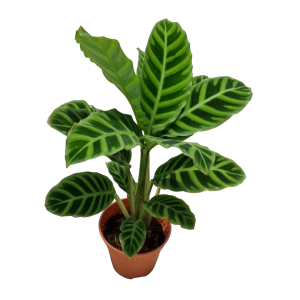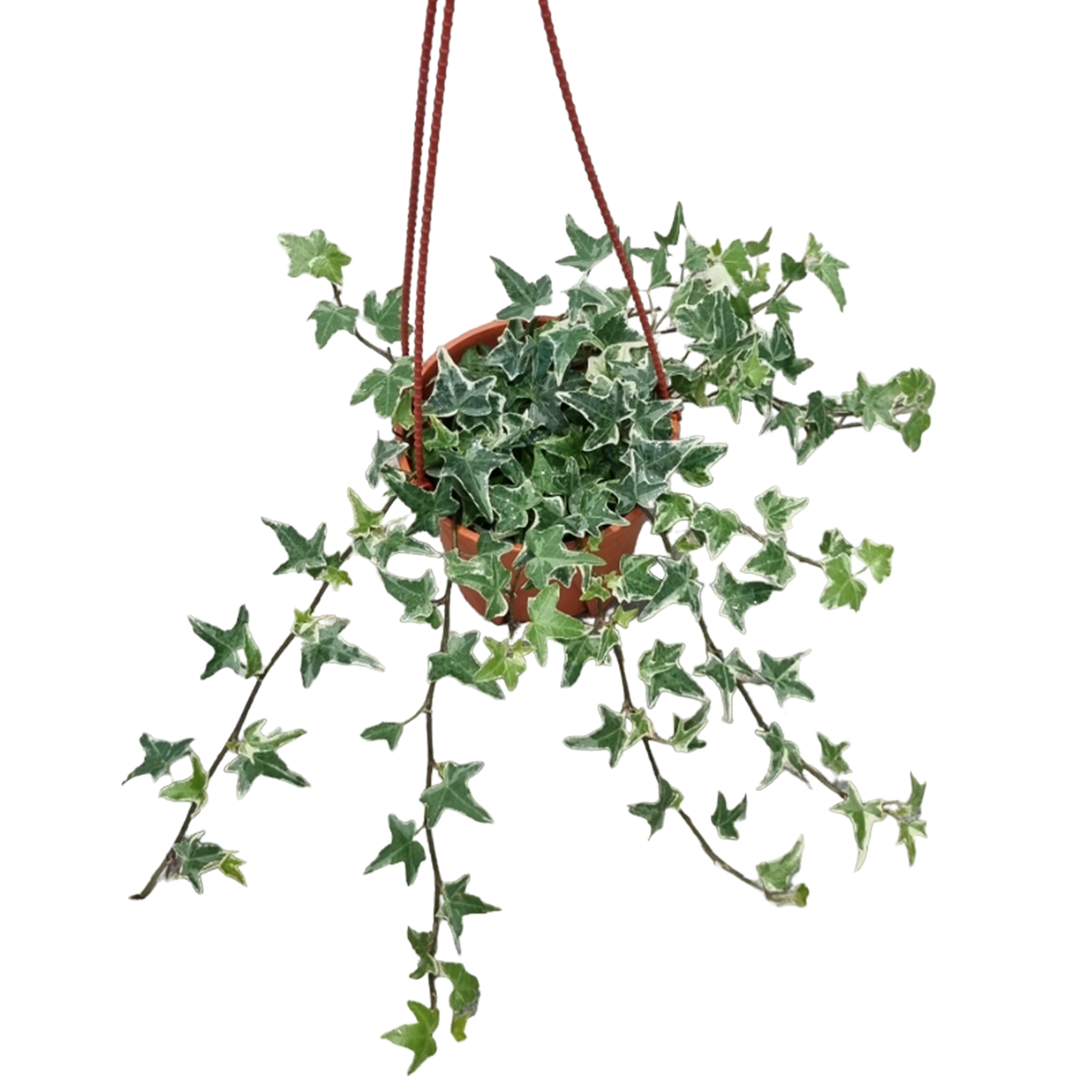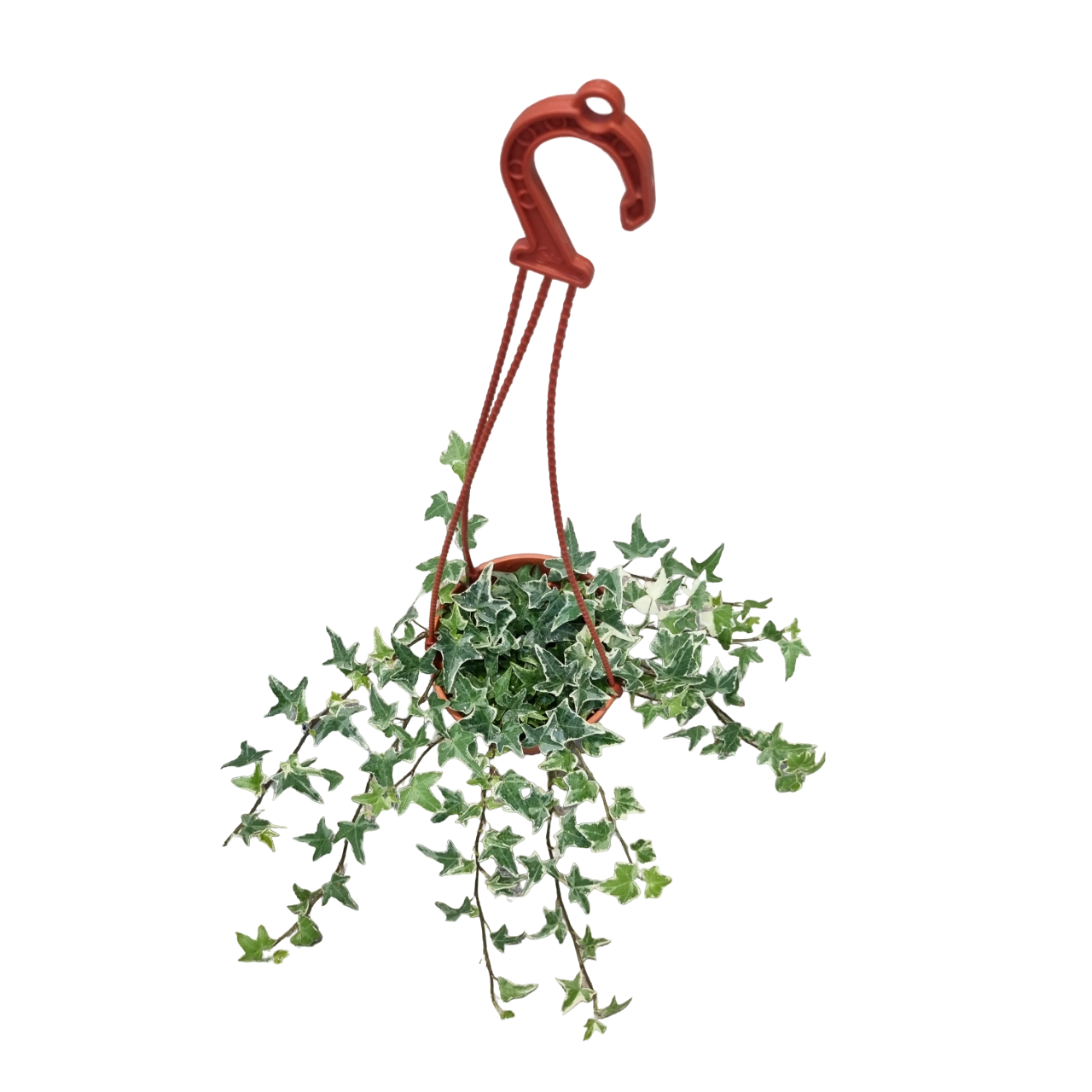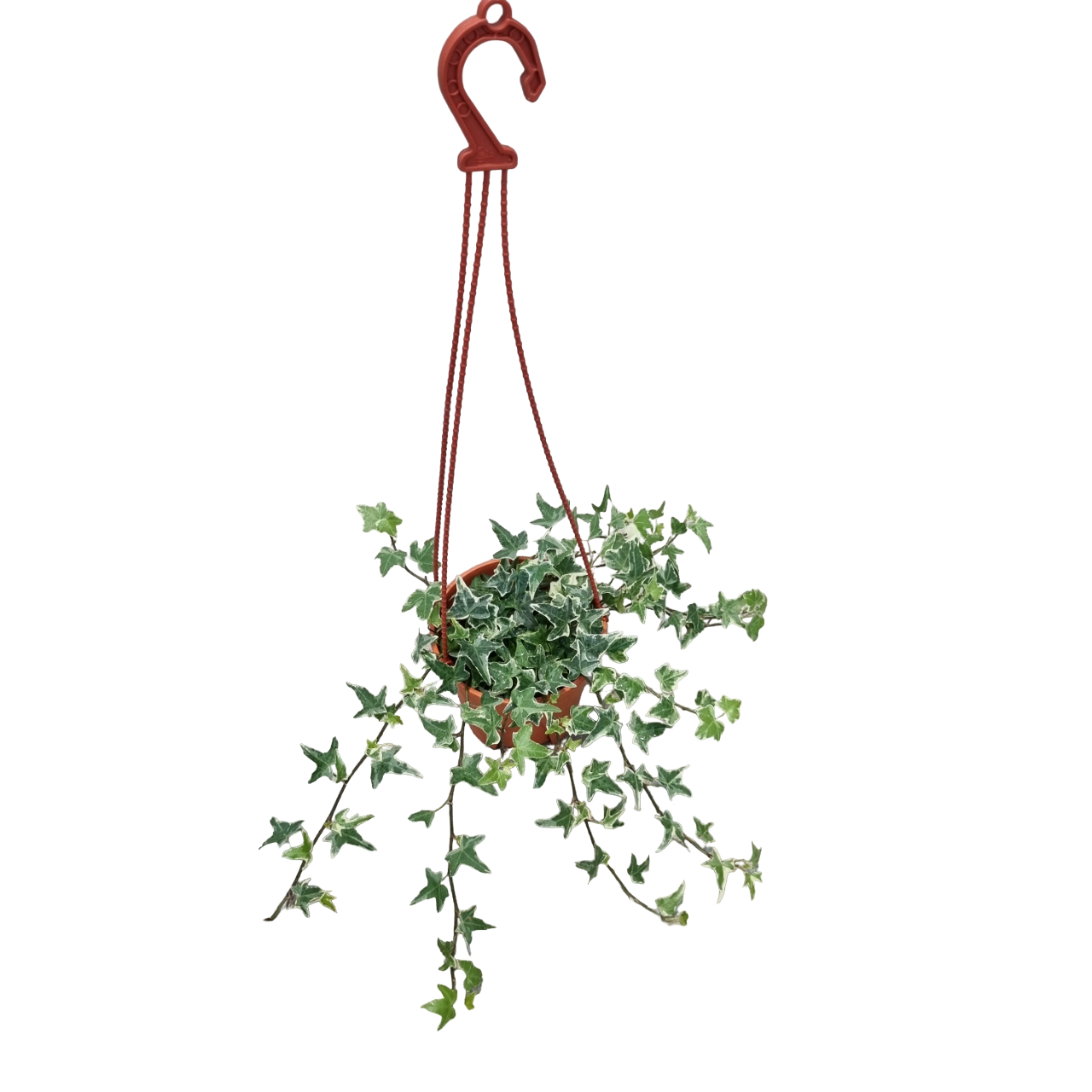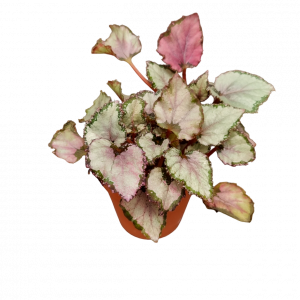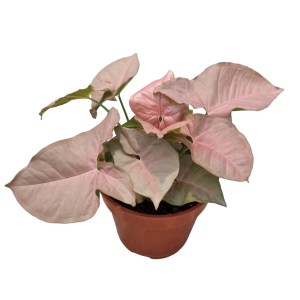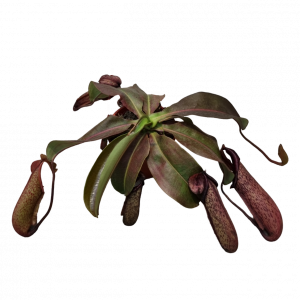Hedera helix ‘Glacier’, commonly known as English Ivy ‘Glacier’, is a distinctive cultivar of the well-known Hedera helix species, native to Europe and Western Asia. This variegated variety features attractive, green-and-silver patterned leaves with a pale, almost silvery-white centre, creating a striking contrast against the darker green margins. English Ivy is renowned for its versatility, making it suitable for both ground cover and climbing, and it is often seen cascading from hanging baskets or climbing trellises. Hedera helix ‘Glacier’ adds a touch of elegance and charm to any garden or indoor space with its lush, trailing growth and attractive foliage.
Plant Care Guide
Light: English Ivy ‘Glacier’ thrives in bright, indirect light but can also tolerate moderate shade. Avoid placing the plant in direct sunlight for extended periods, as this can cause the variegated leaves to scorch.
Water: This ivy variety prefers evenly moist soil but does not tolerate waterlogged conditions. Water the plant when the top layer of soil begins to feel dry to the touch, ensuring that the roots receive adequate moisture.
Soil: English Ivy ‘Glacier’ grows best in well-draining, moderately rich soil. It can adapt to a variety of soil types but thrives in a soil mix that retains some moisture while ensuring good drainage.
Fertilising: To promote healthy growth, feed Hedera helix ‘Glacier’ with a balanced, water-soluble fertiliser. A general-purpose fertiliser with an equal ratio of nitrogen, phosphorus, and potassium will encourage both foliage and root development. Avoid over-fertilising, as this can result in excessive leaf growth with fewer vibrant variegations.
Common Pests: While Hedera helix ‘Glacier’ is relatively pest-resistant, it can still be susceptible to common houseplant pests such as spider mites, aphids, and mealybugs. Check the undersides of the leaves for any signs of infestation, and treat with insecticidal soap or neem oil if necessary. Additionally, poor air circulation can encourage fungal issues such as powdery mildew, so ensure that the plant has sufficient airflow, especially when grown indoors.
General Care: Hedera helix ‘Glacier’ is an adaptable plant that can be grown in hanging baskets, as ground cover, or trained to climb a trellis or wall. Regular trimming and pruning help maintain its shape and prevent it from becoming overly leggy. For climbing varieties, provide support structures such as trellises or fences for the plant to latch onto with its aerial roots. Keep an eye on growth to avoid the plant becoming too invasive, especially in outdoor settings.
Lighting: Bright Filtered Light
Watering: Water Moderately
Watering Frequency: When top layer of soil is dry
Aphids: Aphids are tiny, pear-shaped insects that range in color from green to yellow to black. They feed on the sap of plants using their sharp, piercing mouthparts and can cause stunted growth, curling leaves, and other damage. They reproduce quickly and can form large colonies, making them a common pest in gardens and greenhouses..
Powdery mildew: Powdery mildew is a fungal disease that affects a wide range of plants, causing a white, powdery growth to appear on leaves, stems, and flowers. The disease is most common in warm, humid conditions and can lead to stunted growth, leaf drop, and reduced yields. It can be prevented by providing good air circulation, avoiding overhead watering, and treating infected plants with fungicides or other management strategies..
RYNAN Follamate 230 [1.25kg] 23-8-8-TE: Every 3 Months.

